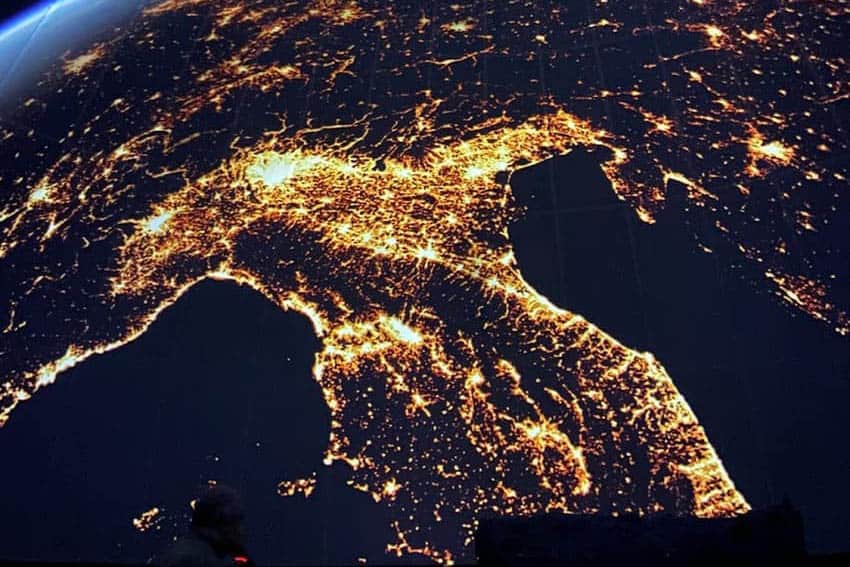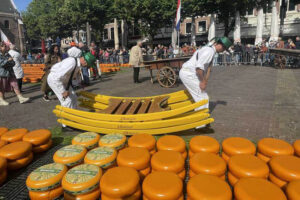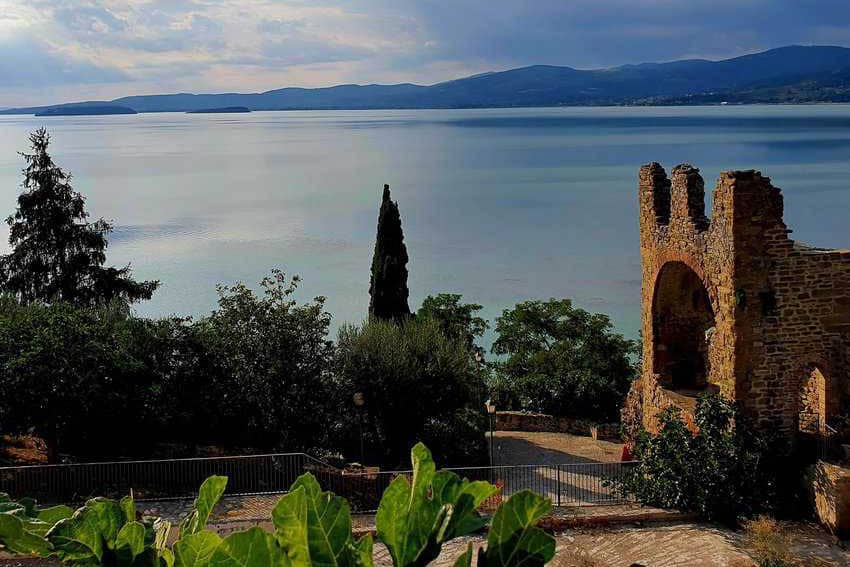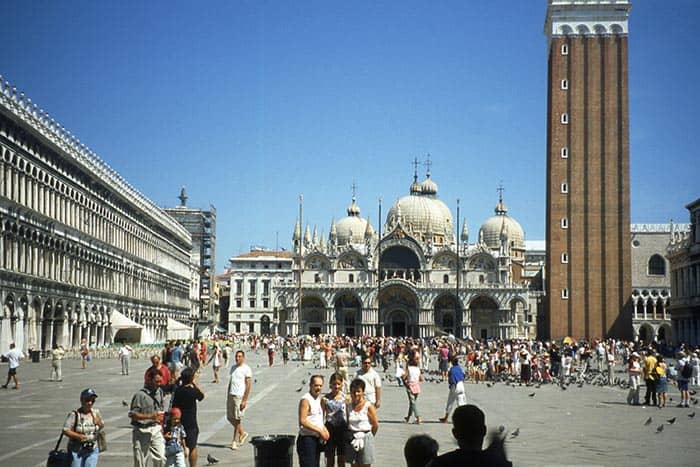
Opening the Door to a Private Venice–Donna Leon Writes about Living in Venice as an American
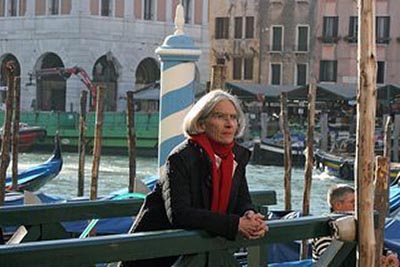
By Dan Peltier
Donna Leon’s wildly popular novels starring Venetian Comissario Guido Brunetti have been praised for their gripping narratives and beloved characters, but also for their incomparable insight into the politics and culture of Venice.
One of the world’s most treasured cities, Venice has been Leon’s home for more than thirty years, and her books open the doors to a private Venice, beyond the reach of the millions of international travelers who enjoy the city’s canals, food, and art every year.
My Venice and Other Essays collects dozens of funny, charming, passionate, and insightful essays that range from battles over garbage in the canals to the troubles with rehabbing Venetian real estate. Leon shares episodes from her life in Venice explores her love of opera and recounts tales from in and around her country house in the mountains.
With pointed observations and humor, she also explores the idea of the Italian man, her family history, and her former life in New Jersey, in a collection sure to delight lovers of Italy and La Serenissima.
Leon is the winner of the Crime Writers Association Macallan Silver Dagger for Fiction and has been named one of the fifty greatest crime writers by The Times (London). Visit her website to learn more about her works and life in of one the most mysterious and enchanting cities in the world.
Excerpt: On the Beating Heart of the City: the Clocktower of San Marco

One of the most enticing things about Venice is the sense of mystery it imposes; there’s never any certainty about what will lie around the next turning or what will be revealed behind the opening door.
Novelists, filmmakers, even the common tourist-all have been captured by this haunting sense that things will turn out to be different from what they first appear to be.
Nowhere is this more true than in the case of Alberto Peratoner, guardian of the clocktower of San Marco and son and grandson of guardians of the tower, and nowhere is it more evident than in the work that has sustained him and his ancestors for most of this century.
The clock and tower of San Marco were inaugurated on February 1, 1499, and have been for five centuries a perfect symbol of this city. Unlike any other clock of its age and size, this one has two faces. The first gazes out past the statues of San Teodoro and his dragon and the Lion of San Marco at the waters that offered safety to the original builders of the city and that later carried the ships of Venice to the economic conquest of two continents.
The second gazes inward, along the narrow length of the Merceria and toward Rialto, the economic heart of the city. Like Venice, the clock aged, and it received major restorations in 1757 and 1858. Luigi Peratoner became keeper of the tower and the clock of San Marco in 1916; his son Giovanni took his place in 1945; and the current custodian, Alberto, took over upon his father’s sudden death in 1986.
The custodian of the clock has the task of keeping the clock in working order, which means winding its immense and complicated mechanism twice a day and making the many adjustments necessary to keep it telling accurate time.
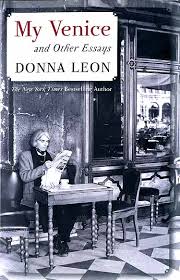 By long tradition, the custodian lives in the tower, which means not only that he lives alongside the ticking heart of the clock but also that he has from his rooftop one of the most breathtaking views of the city, which is itself an endless succession of breathtaking views.
By long tradition, the custodian lives in the tower, which means not only that he lives alongside the ticking heart of the clock but also that he has from his rooftop one of the most breathtaking views of the city, which is itself an endless succession of breathtaking views.
Caretaker
Keeper. Caretaker. In any other city, this might make the hearer think of a stooping man in a blue apron, pockets bursting with strange tools. And a “custodian” would probably be a bit slow to understand even the most simple things.
But this is Venice, where few things are what they at first seem to be.
And so Alberto Peratoner is a university graduate with a degree in philosophy, a man who more or less stumbled into the job upon his father’s death and who, much as he has the ticking of the clock in his blood, finds his intellectual passion in the philosophy of Pascal.
He is by no means stooped and apron-clad, one of life’s solitaries. Instead, he is a well-dressed and elegantly spoken man who makes no attempt to disguise the love he feels for his wife, Rita Morosini. Nor can he long hide his passion for the music of Handel.
The idea that he is a mere custodian for this, the world’s most famous clock after Big Ben, is entirely misleading. He is, instead, a man who, by virtue of having his life alongside and, in a certain sense, inside the all but the living mechanism of this clock, has come to know it’s every whim and whiz and click and bang.
He knows intimately the effects of humidity, atmospheric pressure, and sudden changes in temperature upon the clock, and the need to counteract their results by the addition of oil of a particular density or the delicate adjustment of a lever.
When asked how he knows which oil to use, how much or how little to adjust the lever, Peratoner smiles and responds with a phrase of Pascal’s, that one needs esprit de finesse to respond to the beating heart of the clock and to understand its many moods.
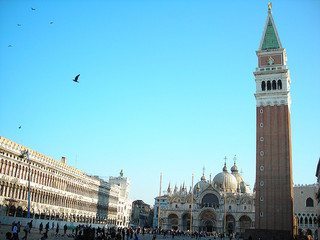
New Neighbors
A few months ago, as yet another side effect of the housing disaster that ruined two years of my life, I moved into a rental apartment not far from the one in which I’d lived for fifteen years.
This new place is larger, brighter, and higher; in fact, it is quite wonderful, with a view of the bell towers of both San Marco and Santi Apostoli. The same window that lets me look at the bell tower of San Marco also allows me to look down into the courtyard of Palazzo Boldù.
So famous is this building that, to explain to Venetians where I live, I have only to tell them that I live near Palazzo Boldù and they pinpoint me exactly on a map of the city we all carry in our minds.
Palazzo Boldù, you see, is the psychiatric center, the place where the various walking wounded of the city come each day to be given whatever drug, therapy, or counseling is necessary to get them through the day.
The former madhouse on the island of San Clemente was closed years ago as a result of a law aimed at helping the mentally ill by reintroducing them into the community, thus reweaving them into the social fabric.
Whether this works or not, I don’t know. Whether these poor souls are better or worse off for the closing of the madhouses, I have no idea.
All I know is what I observe from the window of my study and what I hear from the windows of all the rooms of the apartment.
The doors of the palazzo open for patients at eight in the morning, though before that time staff members can let themselves in through the enormous wooden portals that close off the courtyard from the small campiello of Santa Maria Nova.
They arrive, the first restless patients, at about five, at least in the spring and summer, and wake every morning with their conversations and songs and wild, heated arguments. No matter how passionate or calm the discussions I overhear, no matter how angry the words, they are always scored for single voice, for they seldom talk to one another while they are outside the walls of Palazzo Boldù.
Village Gossip
Who they are or why they go there, I have no idea. Village gossip exists, and I’m sure I could learn whatever story is told about each one of them, but some sense of modesty keeps me from asking, even among my neighbors, who have lived around them for years.
There is the dark-haired woman I’ve seen walking up and down Strada Nuova for thirty years now; strangely enough, she has aged while I, of course, have not. There is the woman who shifts from one side with metronomic regularity, not to be confused with the woman who moves ahead with tiny robot steps.
And there is Laurap-robust, blonde, about forty. She sits in the courtyard all day, smoking endlessly, and I’ve never seen her speak to anyone.
One day last week I overheard loud voices and, drawn to them, looked out the window and down into the courtyard. Two men and a woman had come to sit at the same table with Laura, who had placed on the table in front of her a tiny stuffed animal, too small in the distance for me to distinguish species. “Oh, Laura, che bella,” “Laura, fammi vedere, che bella.”
For a few minutes, a silent Laura sat at the center of their loud, genuine, admiration, then she passed her tiny stuffed animal from hand to hand as all of them sang its phrases and told her how lucky she was to have it. They handled it with great care and treated her with equal respect; they could not have been more careful with a relic or a baby.
In the end, Laura took the stuffed toy and set it back down on the table in front of her. She offered one of the men a cigarette. He took it, and she lit it for him, and I turned away before I began to cry.
Buy My Venice and Other Essays on Amazon.
Love Italy? Get our Italy Plane Reader with dozens of features about Italy–to go on your Kindle, Nook or iPad. Only $2.99!
Eurail Passes: What to Know about Buying a Europe Train Pass
- These 9 U.S. National Parks Require Reservations in 2024 - April 17, 2024
- Take a Hike in Olympic National Park - April 17, 2024
- The Wild Mississippi: 2340 Miles Across Ten States - April 8, 2024


